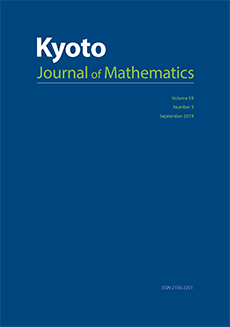Abstract
We study the Aharonov–Bohm (AB) effect through resonances for magnetic scattering in two dimensions. The scattering system consists of three scatterers, one bounded obstacle, and two scalar potentials with compact supports at large separation, where the obstacle is placed between two supports and the support of the magnetic field is completely shielded by the obstacle. The field does not influence particles from a classical mechanical point of view, but quantum particles are influenced by the corresponding vector potential which does not necessarily vanish outside the obstacle. This quantum phenomenon is called the AB effect. The resonances are shown to be generated near the real axis by the trajectories oscillating between two supports of the scalar potentials as the distances between the three scatterers go to infinity. The location is described in terms of the backward amplitudes for scattering by each of the scalar potentials and by the obstacle, and it depends heavily on the magnetic flux of the field.
Citation
Hideo Tamura. "Aharonov–Bohm effect in resonances of magnetic Schrödinger operators in two dimensions." Kyoto J. Math. 52 (3) 557 - 595, Fall 2012. https://doi.org/10.1215/21562261-1625199
Information





